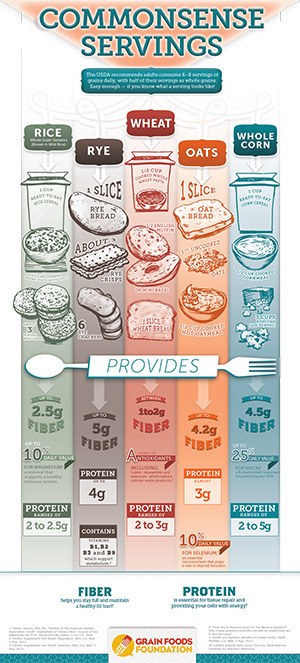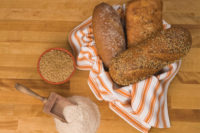Fiber is an essential part of a healthy diet, yet it is a nutrient that is under-consumed by the majority of Americans. I, too, fall into the majority and understand how difficult it is to meet the daily recommended intake. I am attempting to address my shortfall by adding wheat bran to my morning meal, but the challenge is even harder with my three growing children. Given their ever-changing palates, products containing fortified fibers are tremendously helpful.
A study led by Marla M. Reicks, Ph.D., professor, Department of Food Science and Nutrition, University of Minnesota, St. Paul, found that most children and adults in the U.S. are falling far short of the daily fiber intake recommended by the Institute of Medicine (Nutrition Research, 34(3):226–234). While adults need 25 to 30 grams of fiber per day (based on a metric of daily caloric intake—12.5 grams of fiber per 1,000 calories consumed are recommended), only about half of Americans meet this standard.
Why is this lack of fiber problematic? Because fiber not only offers a range of health benefits, it also helps prevent many of the chronic illnesses currently plaguing Americans. From keeping digestive tracts working properly to boosting weight loss to protecting against cardiovascular disease and helping to prevent diabetes, increasing fiber intake could make a tremendous impact on health. Continued fiber deficiency exacerbates costly chronic conditions that put a strain on our health-care system. But despite public awareness of these clear benefits, Americans are still not getting enough fiber.
Products fortified with fiber may help increase fiber consumption across all generations. We often look for the easiest, quickest way to improve our health, and fortified fiber products are a convenient solution, allowing an increase of fiber consumption while maintaining typical shopping and eating habits. Research from Mintel, Chicago—as reported in “Mintel Serves Up 5 Key Food and Drink Trends for 2015” on Feb. 2, 2015—found that 80 percent of U.S. consumers are looking to purchase products with nutritional claims, including those with fortified fiber—and producers are taking note.
Bread, which bakers have fortified with fiber for a long time, now finds company with a wider diversity of fiber-fortified products. According to Mintel, between 2013 and 2014, consumer research found that the number of products claiming to be “high in fiber” or have “added fiber” has increased compared to prior years. The increased variety and sheer number of products available, paired with consumer demand, means this health trend is impacting business.
A diverse range of products with added fiber —including breads, buns and rolls, breakfast and nutrition bars—are now found on grocery store shelves with increasing regularity. And with the forthcoming 2015 Dietary Guidelines for Americans anticipated for release by the end of this year, fiber is expected to continue as a nutrient that is top-of-mind for numerous domestic sectors, including consumers in general, health-care professionals and the food industry. This will not only justify companies’ investment in the development of fiber-fortified products, but also ensure that the marketing, labeling and promotion of these products will continue to be a priority.
While more fiber-fortified products continue to hit store shelves and provide an often-needed boost to an individual’s fiber intake, they are not the sole solution to this widespread deficiency. Fiber-fortified foods often rely on isolated fibers like inulin, polydextrose and oligofructose. While products containing these components help increase the number of fiber grams consumed on a daily basis, they sometimes lack the wide variety of vitamins, minerals and nutrients that naturally fiber-filled foods contain.
Furthermore, researchers and regulatory bodies debate whether the benefits of fortified foods outweigh the complications some specific fiber ingredients can sometimes cause, including bloating and gas. Meanwhile, nutritional ingredient suppliers continue to develop new, effective fibers for use in a wide range of snack and bakery products. Regardless, I hope to see more studies on the physiological impact of isolated and dietary fibers. Consuming a mixture of both fortified and naturally fiber-rich foods, such as whole grains, legumes and vegetables like broccoli or potatoes, is likely the best recommendation for closing the fiber nutrient gap—and a strategy that the food industry should clearly communicate to consumers.
For my family, I aim to include natural fibers at dinnertime, whether through whole-grain pastas or a cup of broccoli, while using fiber-fortified snacks and other options as supplements. I continue to enjoy a morning bowl of bran cereal to ensure that I am keeping my heart healthy and trying to meet the recommended intake. Perhaps with the forthcoming Dietary Guidelines, there will be greater awareness and acceptance of fiber-fortified products to close our national fiber nutrient gap.




